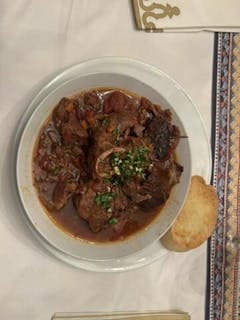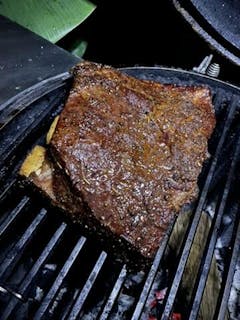Understanding Beef Fat (Suet)
What is Beef Fat (Suet)?
Beef fat, commonly referred to as suet, is the hard fat found around the kidneys and loins of cattle. It's solid at room temperature and has a high melting point. This unique property makes suet an excellent choice for various cooking methods. When used in recipes, suet provides a rich, savory flavor, enhancing dishes like traditional British puddings. Because of its high fat content and unique texture, it is often favored for baking and frying, which allows for a crispier finish.
Nutritional Value and Cooking Uses
One reason chefs and home cooks appreciate beef fat (suet) is its rich nutrient profile. Suet is packed with essential fatty acids, which can support energy levels and overall health. It's also a great source of vitamins A, D, E, and K, which are crucial for bodily functions. Many people use suet to create flavorful gravies, soups, and sauces. Additionally, it's commonly utilized in baking to produce flaky pastries and tender pies. Therefore, suet is not just a cooking fat; it's a versatile ingredient in many kitchens.
How to Store and Use Beef Fat (Suet)
Storing beef fat (suet) properly is essential to maintain its freshness. Keep it wrapped tightly in plastic wrap or placed in an airtight container, and store it in the refrigerator or freezer. When ready to use, you can grate or chop the suet into smaller pieces for easier incorporation into your recipes. Many cooks prefer to render the fat into liquid form for a smoother consistency and enhanced flavor. This rendering process means melting it on low heat and straining it before use, which can lead to delicious results in your cooking endeavors.
What makes us better?
- Tillman's Meats has been proudly serving the hunting community with wild game processing for over 40 years. No one beats us in skill, customer service and efficiency.
- We are approved by both the USDA and Florida Department of Agriculture to custom process your prized wild game.
- Our standards are higher and prices are better.
- Each processing order is done one at a time. Orders are not mixed, but individually tracked and kept separate from other orders - to avoid cross-contamination. In doing this, you can ensure the cleanliness and integrity of your meat.
- We offer the widest variety of processing options.
Our Team of Master Butchers
We have a very talented team of Master Butchers and Meat Cutters who are very knowledgeable in the craft. Our Master Butchers each have over 30 years experience, and with it comes highly skilled craftsmanship and the best quality game processing.
We process - Deer, Elk, Wild Turkey, Wild Hog, Antelope, Pheasant, Quail, Alligator, Poultry and much more!

Here are the rules:
Cleaned | Quartered | On Ice
Our butchers are easy to work with, they ask that when you bring your game, it is:
- In an iced down cooler that keeps the meat below 41 degrees
- Skinned, gutted, and quartered
- Clean and free of all foreign debris and residue - including hair, bullets, arrowheads etc.
Always, bring your game to us in an iced down cooler - we always check receiving temperatures. Our butcher will receive and store your game in our freezer with a freezer bag for the period that we hold it. We don't keep coolers. When you return for pick-up, please come back with your iced cooler for safe and acceptable transportation back home.
It is very important to keep the temperature of the meat below 41 degrees to prevent decomposition, bacterial growth, and any contamination.
We do not keep coolers in our premises due to limited space and in order to meet and maintain acceptable storage temperatures of the game inside the cooler.
We Do It Your Way - the widest variety of services offered:
We'll take your instructions upon delivery and in case you don't know what to do, we'll happily offer suggestions and recommendations. We offer the following processing options:
- Ground Meat
- Ground Sausage
- Linked Sausage
- Smoked Sausage
- Smoked Snack Sticks - Regular; Apple Maple; Jalapeno & Cheddar
- Cubed Steaks
- Medallions
- Leg, Shoulder or Loin Chops
- Roasts
- Added beef or pork fat for better flavor, texture and consistency
- Smoked Summer Sausage - Regular; Jalapeno & Cheddar
- Fresh Jerky
- Smoked Jerky
- Stew Meat
- Steaks
- Ribs
- Smoking & Vacuum Sealing (optional)
Sausage Flavors Offered:
- Andouille
- Kielbasa
- Bratwurst
- Cheddar Brats
- Mild Italian & Hot Italian
- Country Breakfast Sausage & Hot Country Breakfast Sausage
- Chorizo
- Jalapeno & Cheddar* (most popular option)
Cherry Wood Smoked
You have the option of having your game meats wood smoked!
This is especially a common request for sausage fans. Feel free to stop in and we’ll discuss what we can do to make your wild game a palate pleasing experience.
Contact us for further inquiries:
Call and chat with our butchers 904-268-1535 to discuss your processing options, prices etc. We also do on-site and on-farm visits for butchering services.
In-Store Specials – Fresh Cuts, Weekly Deals & Butcher Savings
Shopping In-Store
There are huge benefits to shopping in-store:
- Benefit from in-store only discounts and daily deals
- You can save up to 50% off on selected steaks
- Get one-on-one meat advice
- See first-hand our beautiful display and selection of fresh, hand-cut, hand-trimmed steaks and meats
- Meet and talk to the Master Butchers
Freezer Specials
Save up to 33% when you get any one of our Tillman’s Meats Freezer Special Bundle Packs!
Serious savings available all day long, our Freezer Specials are all packaged and flash frozen to maintain freshness and flavor.
Depending on your family size, these freezer specials will last for a long time and make quality meals for any occasion, and best of all they’re available in two options - Regular Full Size and Half Size.
No need to hassle and run to the grocery store, all of our freezer packs are itemized, labelled and portioned out for simple, easy picking and cooking.
Wait no more, make room in your freezer and stock up on a whole lot of savings!

*Max. 2 substitutions on any full size package
In-Store Coupons
Shop at Tillman’s Meats and Save BIG! Our in-store prices and coupons are unbeatable.
We have the freshest and best quality meats in the market and we have them available to you at prices you’ll surely appreciate and love.
Everyday savings at Tillman’s Meats where all of our meats are hand-cut and trimmed by us, the experts.
Current In-store only Specials:
- 10 LBS of Fresh Chicken Breast - $49.99
- 10 LBS Ground Beef - $59.99 (individually wrapped & frozen in 1 LB packages)






















